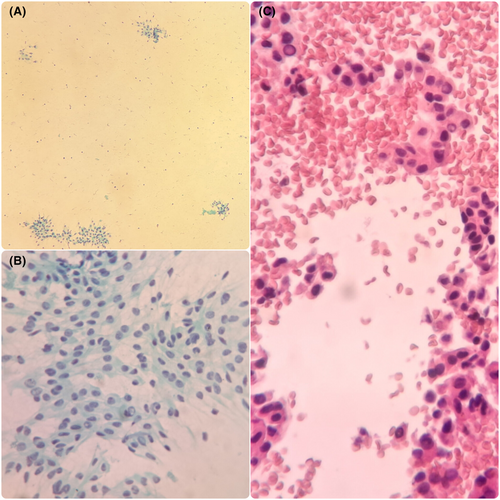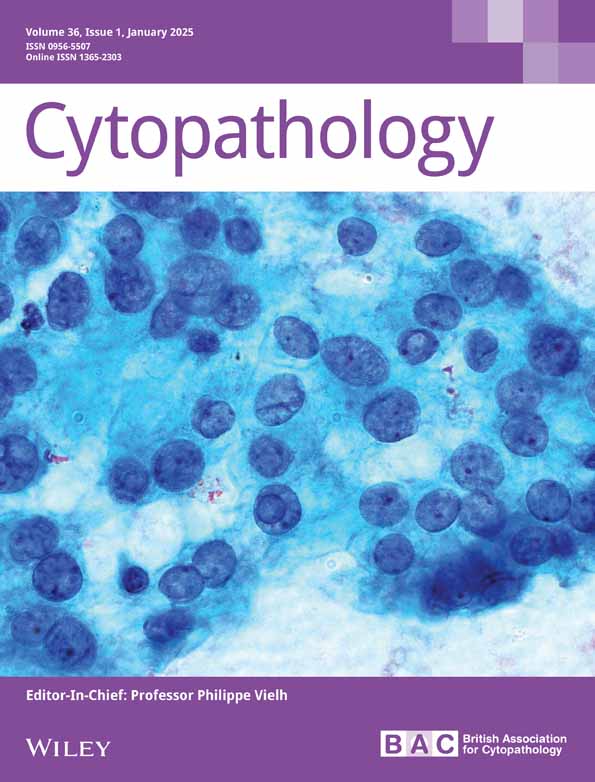Striated duct adenoma: The cytological description of a rare entity
Abstract
Introduction
Striated duct adenoma is a benign salivary gland tumour recently recognized by the World Health Organization. To date, no report has described the cytological features of this entity.
Materials and Methods
We report the case of a 60-year-old woman with a tumour in the right parotid gland with a diameter greater than 2.4 cm confirmed by imaging tests.
Results
Two fine-needle aspiration cytologies (FNAC) were performed with inconclusive results, reporting epithelioid and spindle-shaped cellularity, with little stroma, and nuclei with abundant pseudoinclusions. Myoepithelioma and Schwannoma were proposed as differential diagnoses. An immunocytochemical panel was performed, showing positivity for S-100, SOX10, CK7 and vimentin, and negativity for both myoepithelial (p63 and calponin) and thyroid markers. In the absence of a conclusive diagnosis, the patient accepted surgery. The biopsy results confirmed diagnosis of striated duct adenoma, with immunohistochemical features superimposable to cytology.
Conclusion
Little information is available in the literature, both on biopsy and, more strikingly, on cytology of this neoplasm. The aim of this work is to provide cytological characteristics that allow diagnosis of this entity with FNAC and thus avoid unnecessary surgeries.
Graphical Abstract
This study provides the first cytological description of striated duct adenoma, a rare tumour recently included in the classification of the World Health Organization. Likewise, the present work emphasizes the importance of cytopathology in the diagnosis of salivary gland tumours emphasizing the usefulness of complementary techniques, including molecular studies. First cytological description of striated duct adenoma, a benign parotid tumour recently incorporated into the World Health Organization classification, which remains largely unknown.
CONFLICT OF INTEREST STATEMENT
The authors declare no conflicts of interest regarding the publication of this paper.
Open Research
DATA AVAILABILITY STATEMENT
Data sharing is not applicable—no new data generated. Data sharing is not applicable to this article as no new data were created or analysed in this study.





